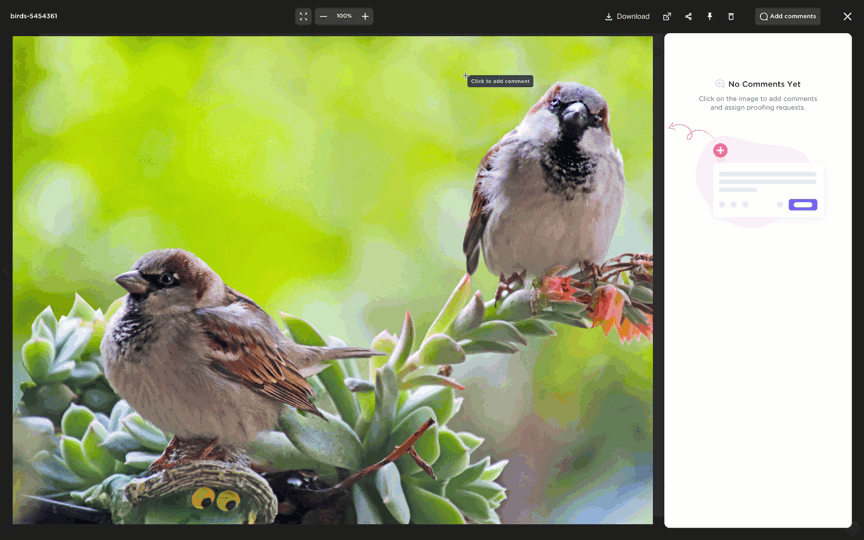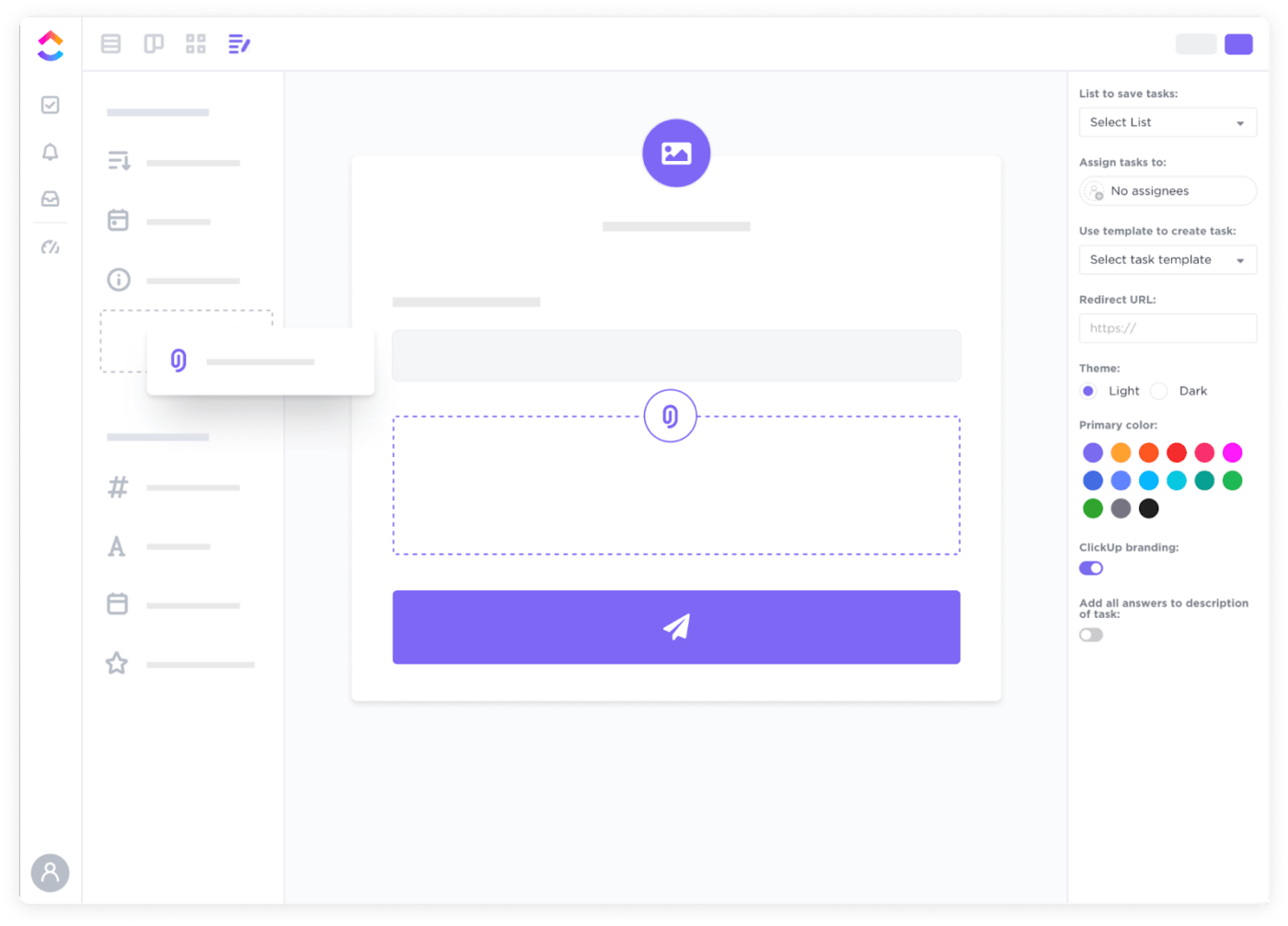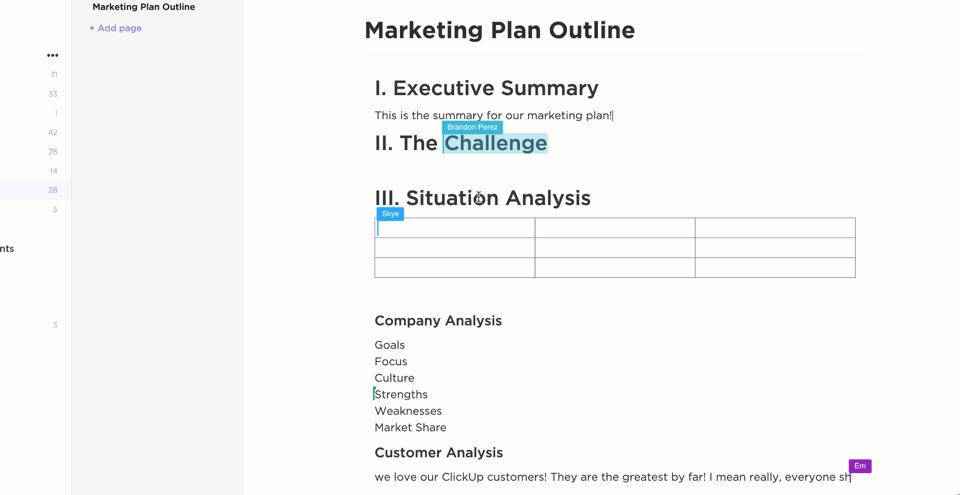

If the best man’s faults were written on his forehead, it would make him pull his hat over his eyes. This Gaelic proverb perfectly summarizes people’s predisposition toward criticism.
No one’s a fan of hearing they’ve done wrong. And on the flip side, the person giving feedback also has a heavy social burden to carry. How do we ensure that we’re providing critical negative feedback without hurting or disrespecting the other person?
As it turns out, constructive criticism, though seemingly harsh, is your silver bullet.
Following the best practices of constructive criticism is useful to all stakeholders of such communication. The person giving the feedback can ensure their words are appropriate and lead to concrete solutions, while those on the receiving end can leverage it for personal development.
Let’s learn about the art of giving and receiving constructive criticism in this guide. As a bonus, we’ll also share a valuable tool to help you tackle feedback—in the constructive way. 😉
- What Is Constructive Criticism?
- Constructive Criticism vs. Destructive Criticism: What’s the Difference?
- 3 Benefits of Constructive Criticism
- Tips for Giving Constructive Criticism Skillfully [With Concrete Examples]
- Make Every Feedback Exercise Productive with ClickUp
- How to Receive Constructive Feedback: The Do’s
- What to Avoid When Receiving Constructive Criticism: The Don’ts
- Revisiting Common FAQs
What Is Constructive Criticism?
Constructive criticism is essentially positive or negative feedback that directs the receiver to take the right steps toward their work and ultimately reach their professional goals.
Giving constructive feedback requires you to focus on more action-oriented elements toward improvement. So, vague criticism or blanket statements—like This was good or Hated your work—will not be considered constructive.
Another element of effective constructive criticism is delivery. According to a Harvard Business Review report, constructive criticism, both positive and negative, helps managers excel at leading by enhancing their employees’ best qualities and addressing their worst in a productive manner. The manager must use emotional intelligence and nuanced techniques to convey the criticism with respect and care.
For example, a manager may notice a dip in their product designer’s output and proceed to provide feedback on how the designer isn’t hitting the target. Instead of rambling about how disruptive this is, the manager offers them insights on client expectations, as well as tips to boost productivity and have a smoother workflow. The supportive approach helps the designer be more receptive to the corrective criticism.
Pro tip: One of the best ways for any manager to provide accurate and constructive feedback is by using feedback form templates. These templates have predefined sections that help keep the feedback objective and useful. For instance, if you’re evaluating an employee, you can quickly jump on the ClickUp Evaluation Form Template to review your employees impartially, without subjective judgments. 🌸

Constructive Criticism vs. Destructive Criticism: What’s the Difference?
There’s a fine line between constructive and destructive criticism, and knowing the difference is essential in a modern-day workplace. Here’s what to keep in mind: 👇
Constructive criticism focuses on actionable advice
When managers or peers provide practical suggestions aimed at enhancing your professional skills, it qualifies as constructive feedback. Genuine constructive criticism is delivered at an appropriate time and focuses on:
- Encouraging personal development
- Recognizing achievements before proposing improvements
- Giving specific criticism about a particular action, not the person
- Improving work quality through actionable suggestions
Bonus read: Learn how to implement a constructive 360° feedback cycle to boost your team’s output quality!
Destructive criticism focuses on fault-finding
Destructive feedback may appear as constructive criticism at times but is, in reality, a veiled, unhinged negative commentary. You can recognize when someone is using this deceptive form of criticism by observing its typical characteristics, such as:
- Hypercritical or excessively nitpicky—these statements sound like personal attacks:
- Look, you made this horrible mistake
- You’re so wrong
- Don’t you have the basic intelligence to do your work?
- Delivered often
- Lacks specificity or actionable advice
- Rooted in individual differences
- Cites flawed sources just to humiliate the receiver
Destructive criticism often stems from implicit bias—when people unknowingly judge specific groups or professions driven by stereotypes or a sense of superiority. This can create a toxic work environment and trigger poor team productivity or high employee turnover.
3 Benefits of Constructive Criticism
Good constructive criticism creates a win-win scenario for everyone—the giver, the receiver, and the company. Let’s explore some of its prominent benefits:
1. Less stress, more achievement
Constantly fearing judgment from superiors cripples employees’ peace of mind. And unfortunately, facing stress for long hours isn’t uncommon in workplaces nowadays. As reported in the Colonial Life survey, 50% of employees are not productive for 1–5 hours every day due to work stress.
By embracing constructive criticism and grooming teams to give and receive feedback gracefully, you free your team from excessive stress, leading to a calmer workplace and better improvement and success prospects.
2. Professional growth
Genuine feedback comes from managers and peers who care about employee growth. They provide constructive criticism to help the receiver level up professionally. According to studies, 83% of employees value feedback. In addition, 72% cite receiving corrective feedback from their supervisors as the most helpful factor in their careers.
3. Continuous improvement in fast-paced teams
Constructive criticism is vital for agile teams in software and product development, where the foundation of any work is based on continuous improvement through feedback.
Such teams typically have a healthy two-way communication culture that fosters an environment of trust and openness. It makes it easier to have difficult conversations between employees and managers and build strong, collaborative teams.
Tips for Giving Constructive Criticism Skillfully [With Concrete Examples]
There’s no thumb rule or one-size-fits-all approach for providing constructive criticism. However, you can follow these tips and best practices to ensure you get your point across clearly.
Use personal pronouns to avoid an aggressive or accusing tone
Master the appropriate language for delivering feedback. Don’t phrase your evaluations in a way that sounds robotic or rude. Here’s when using personal pronouns like “I” becomes a game changer.
When you use “I feel” or “I think” phrases, you allow the feedback recipient to understand that it’s not a point of stressful conflict but a simple shortcoming in the work itself.
Here are two constructive criticism examples of a senior designer providing feedback to a junior:
- Without the I: Your design needs to include more colors like red and white, which are part of the brand’s theme. Currently, it looks plain
- With the I: I love your idea to tweak our usual pattern. However, I believe following our brand theme and adding more colors like red and white would make it even more eye-catching for our target audience
Notice the difference here? The first one has little to no regard for the person’s work and only provides a harsh perspective. The second example appreciates the current work and offers reason-backed, actionable solutions to tweak the design.
Use the sandwich method while delivering feedback
When you give constructive criticism, start on a positive note. Leverage positive feedback to make the receiving party comfortable.
Instead of blurting out your thoughts randomly, create a feedback sandwich by following these three steps:
- Start with positive feedback
- Add negative feedback with suggestions for improvement
- End with appreciation
This method works great when dealing with recent hires and motivates them to perform better. For example:
I love that you’re learning at a quick rate and performing well. You missed some procedural tasks this week, which is okay as you’re still learning. Maybe you can add more of our company documentation to your reading list? Thank you for your hard work!
Provide examples and realistic improvement suggestions for more clarity
Constructive criticism has to be solution-oriented. Support your employee by:
- Offering clear examples of what went wrong and why
- Suggesting the next steps for improvement
- Providing reading and training resources, if applicable
Ask well-intentioned questions to encourage communication
It’s challenging to come up with a solution if you can’t figure out what’s causing an employee to not perform up to the mark. In this case, be genuine and ask why they think a specific problem occurred. Let employees know you’re there to support them and not enforce your beliefs.
For example, when an engineer adds a critical feature way past the deadline, you can dig further by asking these questions during your follow-up meeting:
- Is there a specific reason why the delay happened?
- Are you facing issues with a particular product?
- How can the team help you?
- Can we brainstorm ways to stay on track with our deadlines?
Make Every Feedback Exercise Productive with ClickUp
The tools you use to provide constructive criticism can play a significant role in any feedback exercise.
Take ClickUp, for instance. It is both a comprehensive project management platform and a practical feedback software solution. It adds structure to any critiquing process thanks to its multiple collaborative features, such as meeting templates and proofing tools.
Let’s take a closer look at how ClickUp improves your team’s output quality and helps turn potentially awkward feedback moments into genuine opportunities for growth. 🌞
1. ClickUp Calendar view for scheduling feedback sessions
It’s best to deliver constructive feedback in a more intimate setting—like a face-to-face meeting. This can be a challenge for remote teams across multiple time zones. However, with the ClickUp Calendar view, you can schedule feedback meetings at comfortable time slots and even create an agenda to outline discussion points beforehand.
Agile teams can set up recurring meetings to establish a smooth flow of feedback. The platform has a drag-and-drop editor to support effortless rescheduling.
For giving constructive criticism, we recommend the ClickUp Employee & Manager 1-on-1 Template to:
- Capture the complete discussion history
- Write down feedback notes (like suggested examples and improvement prospects)
- Add future action items
You can pull the template up at your next meeting to check employee progress and updates.
Bonus tip: ClickUp integrates with Zoom to help you launch feedback meetings from a single platform.
2. ClickUp Chat view and proofing to share feedback in real time
Constructive feedback is best delivered with examples and within a reasonable time. Luckily, the ClickUp Chat view offers an excellent setup for real-time feedback exchanges.
Create distinct groups to share constructive feedback selectively as soon as possible instead of waiting for annual or monthly performance reviews. Mention team members to provide product- or process-related feedback directly on the Task page. You also have the option to assign comments to help specific team members remember your suggestions while revisiting similar tasks.

If you want to offer hands-on examples and solutions to your team, ClickUp has your back:
- Use ClickUp Clips to record your screen and create tutorials for error-prone tasks
- For approval-based workflows, use the platform’s Proofing function to leave feedback on written, video, or design content

3. ClickUp Forms for giving and receiving feedback
Create custom evaluation forms for your employees by leveraging ClickUp’s Form view and tailor it to match your feedback style. These forms are easy to set up—you can even implement conditional logic to keep changing the questions depending on users’ answers.

For instance, your standard monthly evaluation form asks: How many hours did you work this month?
If the respondent chooses a number below 120, you can configure the form to pop up another question: Is there a reason why you worked fewer hours this month?
Such dynamic questions help you understand the current nerves of your team and provide effective criticism on how they can improve. You can also create forms for your customer feedback loops or for measuring employee satisfaction.
Design organization-wide feedback survey forms with questions to check whether employees are happy and single out examples that indicate poor satisfaction levels. All responses turn into tasks and are trackable from your centralized Dashboard.
4. ClickUp Docs and ClickUp AI for creating feedback guides
Wouldn’t it be great if all managers knew how they could offer impactful suggestions in a positive manner?
That’s exactly what ClickUp Docs is here for! Create, edit, and share constructive criticism guides with other managers and establish a standard procedure for providing constructive feedback. Let colleagues contribute to your guides by giving them commenting or editing access and reassess the viability of debatable action steps.

However, writing a feedback guide can be time-consuming, even with someone’s help. Consider taking charge with ClickUp Brain, the platform’s AI assistant, and use 100+ industry-specific prompts to generate well-formatted and professional-looking guides and process documents.
You can always use the AI tool for other managerial tasks, such as writing emails and contracts or ideating new work procedures. It can even summarize meeting notes or older feedback documents to save time during performance meetings.
Bonus: Leverage communication plan templates to maintain the best communication culture in your team.
5. ClickUp Dashboards and Custom Task Statuses for tracking feedback
Track feedback statuses with ClickUp Custom Statuses—easily add statuses like Pending or Reviewed to feedback-related tasks. You can also generate checklists to keep all your review-based activities in one place.
If you want to follow up on improvement initiatives after a feedback session, take advantage of ClickUp Dashboards. The feature helps you set Goals and visually track the progress of any task, sprint, or entire project!
From task prioritization to project tracking and team performance evaluation, Dashboards serve as a centralized hub for efficient team management.
How to Receive Constructive Feedback: The Do’s
Let’s explore the other end of the spectrum: receiving feedback!
Handling criticism may make you defend yourself, but that’s how a chance for growth turns into a battlefield. Constantly affirm that this is a springboard of countless benefits for you to grow as a professional. Here are some tips to make the process of receiving constructive criticism easy:
Stay calm and be an active listener
Embracing the art of active listening is essential when you receive criticism. Don’t panic or take a defensive stance while your manager is talking. Listen closely and only respond once they’re done or ask you a question.
Reflect
Once you have your feedback, it’s time for introspection. Find a safe space to reflect on what happened or seek advice, whether it’s from your manager or a trusted friend. Introspect with questions like:
- Why did this error occur? Was it my fault?
- What valuable lesson can I learn from this?
- How can this new perspective aid my development?
Refine
After careful reflection, it’s time to turn understanding into action. Ask yourself:
- What practical steps can I take to address the feedback?
- Who can support me in this process?
- How can I track my progress and celebrate my achievements?
Remember, growth is a journey, not a destination. Embrace the continuous learning process, and use every piece of feedback, positive or constructive, as fuel for your journey toward excellence. ✌️
Turn the sting into Thank You
Facing criticism can be tough, but expressing gratitude, even when you disagree, is beneficial. A simple thank you acknowledges the time and effort someone invested in giving you feedback and, by extension, your growth.
What to Avoid When Receiving Constructive Criticism: The Don’ts
Here’s a rundown of what contributes to a poor mindset while receiving feedback:
Attaching emotion to evaluation
Your self-worth should not be tied to your work performance. It’s natural to feel defensive, but remember, feedback is an evaluation of your output, not personality. So, remove personal sentiments while handling professional assessment.
Instant or exaggerated reactions
Resist the immediate impulse to respond. Pause. Strive not to react at all. This momentary pause allows you to prevent dismissive facial expressions and body language or reactive comments, allowing you to consciously choose a composed response that paints you in a good light.
Taking feedback for granted
There’s a limit to how much feedback your manager can provide—if they see no effort toward improvement, they’ll give up on you.
So, avoid taking feedback for granted and note down all the points your manager makes. A great way to do this is by using the ClickUp Notepad to quickly write the critical parts of a feedback session on any device.
Use checklists to easily add identified mistakes/improvements and turn them into trackable tasks to check your progress over time.
Revisiting Common FAQs
1. What is an example of giving constructive criticism?
An example of giving constructive criticism regarding missed deadlines: I’ve noticed that the deadline for this task was not met. I appreciate the effort you’ve invested in the project, and I encourage you to proactively communicate if you anticipate requiring additional time in the future.
2. What is constructive vs. critical criticism in a business context?
The key distinction between constructive and critical feedback lies in the delivery. Constructive criticism aims to uplift the individual to improve performance. In contrast, critical criticism is centered around bringing someone down, often leading to a negative, heated discussion.
ClickUp Can Be Your Cheerleader in the Feedback Frenzy
Feedback conversations aren’t exactly a picnic, but let’s not forget the remarkable growth they can help cultivate! ClickUp isn’t just your go-to work tool; it’s the enabler that facilitates good feedback exercises.
Thanks to its templates, forms, and AI support, the platform helps you build a collaborative haven where honest feedback flows freely and growth becomes a shared journey!
Ditch the feedback fear and sign up for ClickUp today. 🤩



